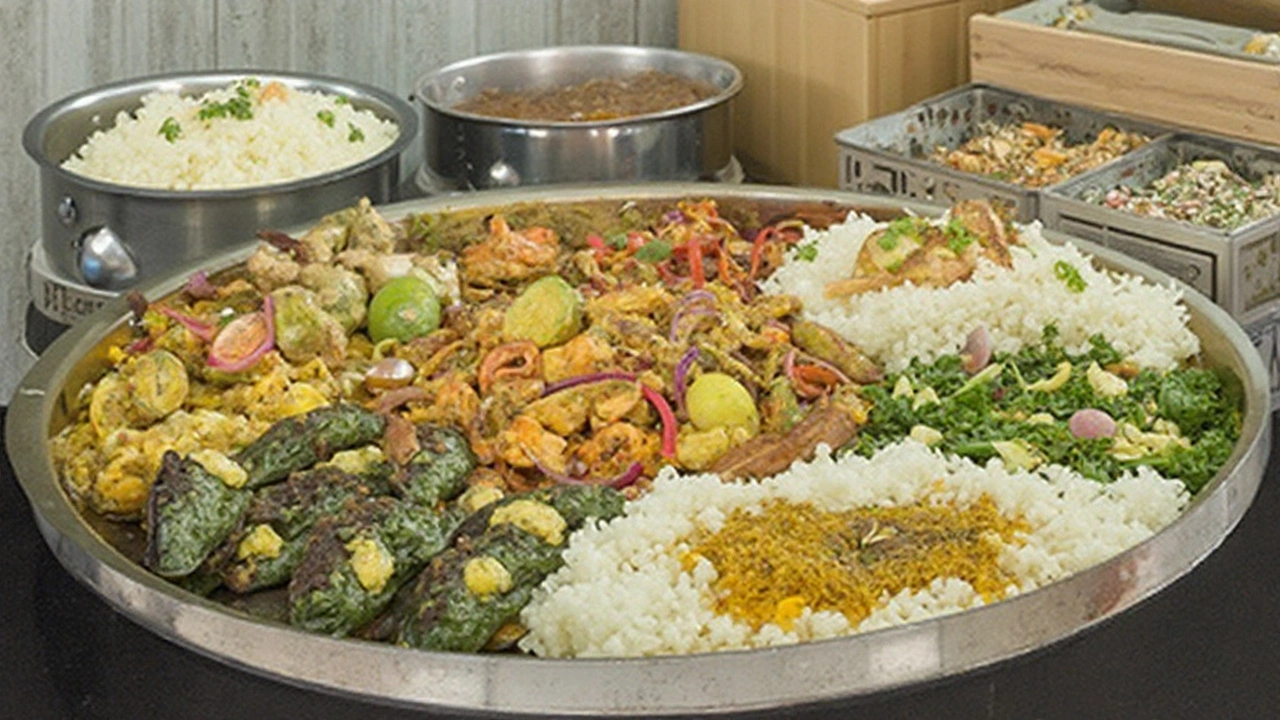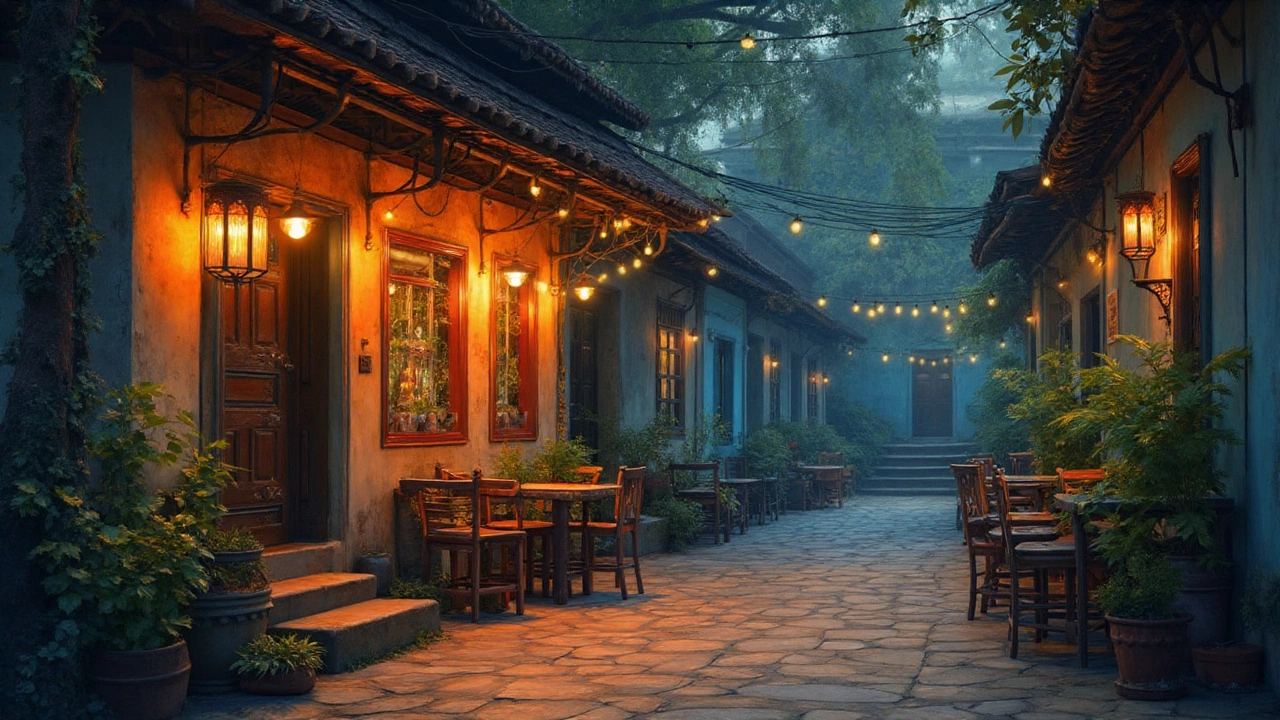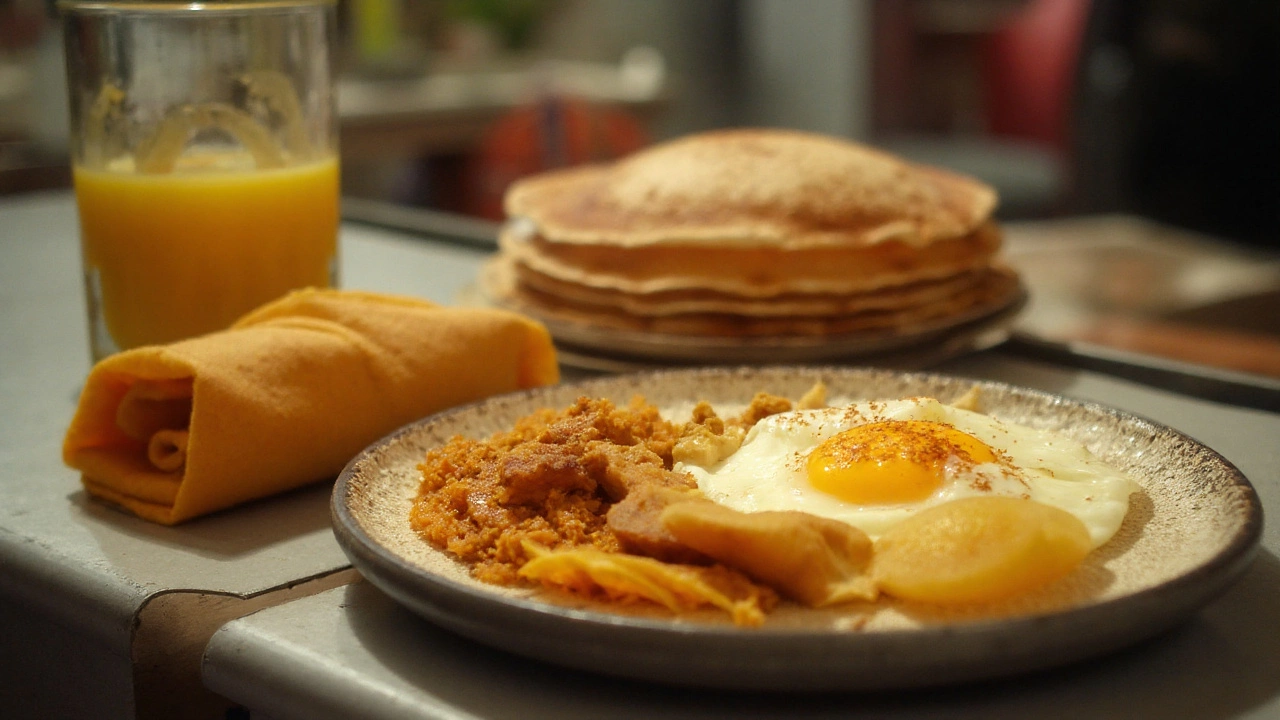Ask five Indians which meal matters most and you’ll get six answers. In coastal Kerala, the midday sadhya steals the show. In Mumbai, dinner is when families actually sit together. In hostels and startups, breakfast gets skipped and tea becomes a meal. So, what’s the honest answer to the question you came here for? It depends-by region, routine, weather, faith, and work hours. But there’s a clear pattern you can use.
- TL;DR: Traditionally, lunch is the anchor meal in much of India (think thalis and rice-based spreads). In big cities and colder months, dinner often becomes heavier. Health guidance leans toward a bigger meal earlier and a lighter, earlier dinner.
- Nutrition bodies in India (ICMR-NIN and FSSAI) stress regular meal timings, a balanced plate, and not skipping breakfast. Urban studies show many skip or shrink breakfast, but it hurts energy and focus.
- If you need one-line clarity: lunch is the practical anchor across regions, dinner carries social weight, breakfast sets the day’s rhythm.
- Travel tip: aim for a full thali at lunch; keep dinner simple. If you’re meeting friends, expect dinner to stretch later, especially in metros.
- Plate rule of thumb: half veggies/salads, a quarter grains (rice/roti/millets), a quarter protein (dal, beans, eggs, paneer, meat), plus curd or buttermilk; stop when you’re 80% full.
Short answer: Is there a “most important meal” in India?
There isn’t one single winner. India’s food culture is too diverse for a universal crown. If the question is “which meal traditionally carries the main nutritional load?”-the answer is lunch in many parts of the country. That’s when you see full thalis, rice with multiple vegetable sides and dal, rotis, buttermilk, and a tiny sweet. If the question is “which meal brings everyone to the table?”-in modern cities, that’s often dinner. If it’s “which meal sets you up for the day?”-that’s breakfast, and skipping it is common but not ideal.
Locals will argue with love about this. In Tamil Nadu, the word “sappadu” pulls you toward a midday spread with rice, sambar, rasam, poriyal, kootu, curd rice. In Kerala, a feast like Onam sadhya is served at lunch on banana leaves. In Punjab, hearty rotis and dal makhani can anchor lunch or dinner based on season and family routine. During Ramadan, the sunset iftar and the night meal (suhoor) reframe the whole day. And on fasting days like Ekadashi or during Navratri, the biggest meal may be a special “vrat” plate eaten after sunset.
So rather than chasing a single label, think in three lenses:
- Nutritional anchor: often lunch, especially in rice-eating regions and agrarian routines.
- Social anchor: often dinner, especially in cities with long commutes.
- Metabolic anchor: earlier, balanced meals tend to be friendlier for blood sugar and sleep.
That’s why you’ll hear confident but different answers. All of them are right in their context.
What the data and nutrition guidelines actually say
If you’re looking for evidence instead of anecdotes, here’s what India’s public health guidance and surveys suggest:
- ICMR-NIN Dietary Guidelines for Indians (2023 update) advise regular meal timings, adequate breakfast, balanced plates across meals, and an earlier, lighter dinner to support digestion and sleep. They promote whole grains (including millets), pulses, vegetables, fruits, and curd/ferments.
- FSSAI’s Eat Right India campaigns echo the same: avoid meal skipping, favor home-cooked thali patterns, load up half your plate with vegetables, and keep dinner light.
- The Indian Time Use Survey (NSO, 2019) shows clear peaks for eating around midday and at night, with dinner skewing later in urban households. It also shows large time investments in cooking at home-still the backbone of Indian meals.
- Urban breakfast behavior: A multicity study supported by ICMR-NIN (2018) reported roughly 1 in 4 urban consumers skipping breakfast on busy days, and many leaning on refined carbs. That skip-and-surge pattern pushes more calories into late meals.
What does this add up to? Health agencies don’t call one meal the “most important” in all cases. They emphasize rhythm: don’t skip breakfast, eat a substantial balanced meal earlier in the day, and keep dinner sensible and earlier if you can. This rhythm lines up with older Indian routines, where lunch did the heavy lifting and dinner wrapped up the day without being a second lunch.
Season and climate matter too. In hot and humid regions, traditional lunches include hydrating elements (sambar/rasam, buttermilk, cucumber salads, lightly cooked veggies). In colder months in the north, dinner can creep up in size with rich ghee-forward dishes and winter greens (saag) because families finally gather after work and school, and the body craves warmth.

How meal priority changes by region, climate, and routine
Here’s a quick map you can use. It won’t capture every home, but it reflects common patterns travelers and newcomers actually meet:
| Region/Context | Main Staples | Heaviest/Anchor Meal | Typical Time Window | Signature Midday Plate |
|---|---|---|---|---|
| South India (TN, Kerala, Karnataka, AP/Telangana) | Rice, idli/dosa, millets, sambar/rasam, curd | Lunch (traditional); dinner may lighten | Lunch 12:30-2:30 pm; dinner 8-9:30 pm | Thali: rice + sambar + 2-3 veggies + curd + pickle; banana leaf feasts at festivals |
| North India (Punjab, Delhi, UP, Rajasthan, HP) | Wheat rotis, rice, dals, seasonal greens, dairy | Lunch or dinner (seasonal shift; dinner heavier in winter) | Lunch 1-2:30 pm; dinner 8-10 pm | Roti + dal + sabzi + raita; winter saag & makki roti; occasional biryani/pulao |
| West India (Maharashtra, Gujarat, Goa) | Rice, bhakri/roti, millets, farsan, fish (coastal) | Lunch (working days); dinner often social in cities | Lunch 1-2 pm; dinner 8:30-10 pm | Varied thali with dal, kadhi, vegetables, small sweet; fish curry-rice on coasts |
| East India (Bengal, Odisha, Bihar) | Rice, fish, lentils, posto, chhena | Lunch (traditional); festive lunches are common | Lunch 1-2:30 pm; dinner 8-9:30 pm | Rice + dal + fish curry + mixed veg + chutney; curd in summer |
| Northeast (Assam, Nagaland, Manipur, etc.) | Rice, greens, fish, fermented bamboo, meats | Lunch (daylight-oriented); early dinners | Lunch 12-2 pm; dinner 7-9 pm | Rice + fish/meat curry + greens; light, clean flavors |
| Urban metros (IT hubs, long commutes) | Mixed; more eating out and delivery at night | Dinner (social/late); lunch is shorter or canteen-led | Lunch 1-3 pm (flex); dinner 9-11 pm (often late) | Office thali at lunch; at night, restaurant or delivery becomes the main event |
Religious and festival calendars also tilt the day. During Ramadan, the sunset meal (iftar) and a pre-dawn suhoor shape the biggest bites. On fasting days like Ekadashi or Navratri, a special “vrat” dinner might be the day’s focus. Harvest festivals (Pongal, Makar Sankranti, Baisakhi) lean into celebratory lunches, especially in rural areas.
One more factor: work and school. Factory and field jobs long centered a full lunch. Today, office work and traffic push people to graze at lunch and load dinner. It’s not always ideal for sleep or blood sugar, but it fits the clock of city life.
How to eat like a local: sample plates and timing tips
If you’re traveling, hosting, or just trying to align your routine with Indian wisdom, here’s a simple playbook. It respects tradition, modern schedules, and what nutrition bodies in India advise.
most important meal in India
Build any Indian plate with this 50-25-25 rule:
- 50% vegetables/salads (cooked and raw; include greens and a seasonal veg).
- 25% grains (rice/roti/bhakri or millets like ragi, bajra, jowar).
- 25% protein (dal, chana/rajma, soy, paneer, eggs, fish, chicken; mix plant and animal proteins through the week).
Add-ons that help: a small cup of curd or buttermilk; a teaspoon of pickle for punch; a fruit in the afternoon.
Breakfast ideas (keep it steady, not tiny):
- South: 2 idlis + sambar + coconut chutney; or 1 dosa with egg or paneer; add a fruit.
- West: poha with peanuts + curd; or upma + sliced cucumber.
- North: 1-2 stuffed parathas with curd and achar; if heavy, lighten lunch a bit.
- East: chire (flattened rice) with curd and jaggery; or luchi on weekends, but go easy and add protein later.
Lunch ideas (make it the anchor if your schedule allows):
- Thali template: 1 cup rice or 2 rotis + dal + 2 veg sides (one dry, one gravy) + raita/curd + small sweet.
- Coastal: fish curry-rice + veg thoran + buttermilk.
- Plant-strong: millets khichdi + mixed veg + salad + curd.
Dinner ideas (earlier and lighter helps sleep):
- 2 rotis + sabzi + bowl of dal; or a small portion of rice if you must.
- Khichdi with veg and ghee, plus salad.
- Soup + stir-fry + small millet roti if you ate a late lunch.
Timing rules of thumb (easy to remember):
- Eat breakfast within 2 hours of waking. Tea or coffee alone isn’t breakfast.
- Make lunch complete. If dinner will be late, push a small fruit-and-nuts snack at 5-6 pm.
- Finish dinner 2-3 hours before bed. Your sleep will thank you.
- Hosting? Do the big spread at lunch on weekends; keep dinner social but simple.
Portion heuristics (no scale needed):
- Carbs: one fist of cooked rice, or 2 palm-sized rotis.
- Protein: one palm (thickness of your palm) of paneer/fish/chicken or 1 cup cooked dal/beans.
- Veggies: two open hands full, cooked or mixed.
- Fats: 2-3 teaspoons of ghee/oil in cooking; no need to drown.
Smart swaps that feel Indian, not punitive:
- Rotate grains: rice at lunch, millets or roti at dinner.
- Keep pickles small-treat as condiment, not side dish.
- Use curd/buttermilk to calm spice and add protein.
- Add a fruit at 3-5 pm to avoid a giant dinner.
Weekday survival checklist (when schedules are messy):
- Pre-cook dal or beans in a pressure cooker and freeze in portions.
- Chop a mix of veggies on Sunday; store by type. Stir-fry gets easy.
- Keep curd, eggs, paneer handy. Protein prevents late-night raids.
- Set a dinner alarm. When it rings, kitchen closes in 45 minutes.

Quick answers to common questions
Is breakfast really the most important meal in India?
Not in a cultural, one-size-fits-all sense. Traditional homes often treat lunch as the anchor. But health guidance says don’t skip breakfast-it steadies energy and reduces the risk of overeating at night.
So, which meal should I prioritize when I’m visiting India?
Prioritize lunch for variety and balance. Grab a thali at a local mess or canteen-it’s the easiest way to eat like a local without overthinking. Keep dinner earlier and lighter, especially if you’re adjusting to spice.
Why is dinner so big in cities if lunch is the anchor?
Commutes and office timings push real family time to the evening. Restaurants are open, delivery is easy, friends are free. It’s social gravity, not necessarily better for you. If dinner runs late, reduce portions and cut the rice; add more veg and protein.
Do Indian nutrition authorities name a “most important meal”?
No. ICMR-NIN and FSSAI focus on regular meals, a balanced plate, and early dinners. They encourage whole grains (including millets), pulses, dairy/curd, vegetables, and fruits. None of these guidelines crown a single meal for everyone.
What about fasting days like Navratri or Ekadashi?
Meals shift. Many people eat one or two special meals with ingredients like sabudana, kuttu (buckwheat), or singhara (water chestnut) flour. The day’s largest plate might be after sunset. Hydration, salt (if allowed), and balanced portions matter.
Is a heavy dinner really that bad?
Occasionally, no big deal. As a habit, late heavy dinners are linked with poor sleep and tougher blood-sugar control. Indian guidance suggests finishing dinner 2-3 hours before bed. If you must eat late, cut portion size, add more veg and protein, and skip second helpings.
What do I do if I can’t eat lunch properly at work?
Pack or pre-order. A simple box with roti + sabzi + a boiled egg/paneer + curd beats a random snack pile. If lunch is light, avoid a sugar-heavy 4 pm snack that boomerangs into a huge dinner.
How do athletes, students, or shift workers fit this in?
Push your “anchor” earlier relative to your wake time. Students: eat breakfast before classes; carry nuts/fruit. Athletes: anchor around training (a solid meal 3-4 hours before, a snack 60-90 minutes before, protein after). Shift workers: treat your first meal post-sleep as breakfast even if it’s 2 pm, and keep the last meal light and early relative to bedtime.
Vegetarian protein without overloading on carbs-how?
Rotate dals (toor, moong, masoor), chana/rajma, soy chunks, tofu/paneer, curd. Pair with fewer rotis/rice and more veggies. Add nuts or seeds to salads/raita.
Does the International Year of Millets (2023) change anything?
It nudged more homes and restaurants to bring back ragi, bajra, and jowar. Practically, this means you can shift some grain portions to millets at lunch or dinner for better fiber and satiety.
Next steps / Troubleshooting
- Traveler with a sensitive stomach: make lunch your main meal; choose cooked veg, fresh dal, and plain rice; add curd. Keep dinner light (khichdi, roti-sabzi). Skip raw street salads at first.
- Busy professional: batch-cook dals and veg on Sunday. Book a thali lunch near the office on heavy workdays. Set a 9 pm kitchen cutoff.
- Parent: front-load kids’ breakfast with protein (egg/paneer/soy) and fruit; keep dinner early on school nights.
- Diabetes or prediabetes: anchor earlier; favor whole grains/millets; add protein and fiber to every meal; finish dinner 3 hours before sleep. Discuss specifics with your clinician-ICMR-NIN guidelines are a good base.
- Fitness-focused: place your biggest meal within the 4-6 hour window around training; don’t backload everything to 10 pm.
If anyone asks you again, you can smile and say: lunch feeds the day, dinner feeds the stories, breakfast keeps the engine from sputtering. Name the “most important” based on the life you lead-and the India you’re in.
